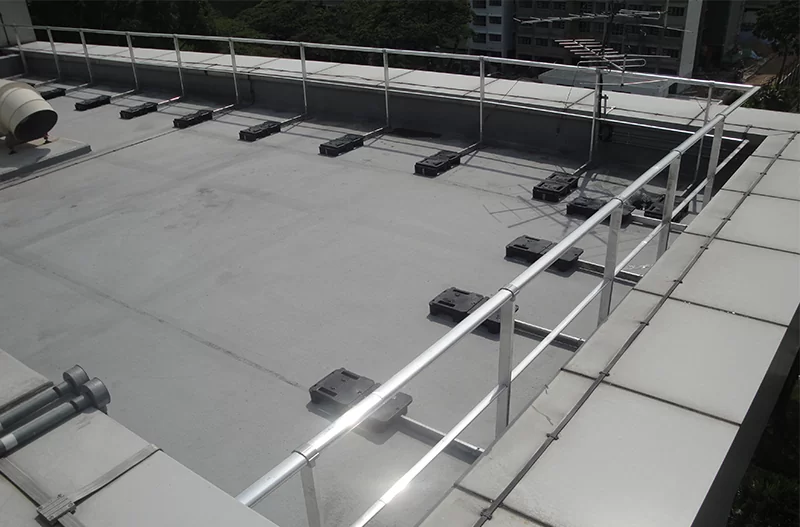Tree cutting is a common practice across urban developments, rural areas, and commercial projects. While often necessary for safety, infrastructure, or land use purposes, it can have far-reaching effects on the environment. At Innerworks International, we recognize the importance of balancing development with sustainability. This blog explores the environmental impact of tree cutting and how responsible practices, like those implemented by Innerworks International, can help minimize harm while promoting greener, healthier ecosystems.
Understanding the Environmental Impact of Tree Cutting
The environmental consequences of tree cutting can be significant. Unlike selective or strategic tree pruning, widespread tree removal—especially deforestation—can destabilize ecosystems. Innerworks International understands that every tree plays a role in biodiversity, climate regulation, and water management. When trees are cut without proper evaluation, the result is habitat loss, increased carbon emissions, and diminished natural resources that communities rely on.
Disruption to Biodiversity
One of the most critical effects of tree cutting is the destruction of biodiversity. Trees provide shelter and food for birds, insects, mammals, and fungi. When these trees are removed, entire ecosystems are disrupted. Innerworks International considers the biodiversity implications before any tree removal operation, ensuring minimal disturbance to wildlife and surrounding vegetation.
Soil Erosion and Degradation
Tree roots play an essential role in holding soil together, preventing erosion, and maintaining soil fertility. Without these roots, rainwater can easily wash away the topsoil, leading to reduced agricultural productivity and increased sediment in waterways. Innerworks International adopts ground-stabilizing strategies after tree removal to protect soil integrity and prevent erosion-related issues.
Climate Change Acceleration
Trees act as carbon sinks, absorbing CO₂ from the atmosphere. When trees are cut and not replaced, their carbon-storing capacity is lost, contributing to climate change. Innerworks International incorporates carbon-offsetting measures, including large-scale replanting efforts and partnerships with green initiatives, to help mitigate these effects and restore environmental balance.
Water Cycle Disruption
Trees are integral to the water cycle, as they help regulate rainfall patterns and maintain groundwater levels. Removing trees disrupts transpiration, reducing atmospheric moisture and altering rainfall. Innerworks International takes water management into account during landscaping and tree-cutting projects, ensuring that ecosystems are not deprived of critical hydration sources.
Common Reasons for Tree Cutting
Tree cutting occurs for various reasons, including urban development, agriculture, and disease management. Innerworks International acknowledges that while some of these are necessary, they must be approached responsibly. Whether removing trees for construction or landscaping, the company prioritizes environmental assessments and sustainable alternatives before proceeding.
Case Studies: Tree Cutting in Different Environments
In urban areas, trees are often removed to make way for roads or commercial buildings. In contrast, rural regions face tree clearing for farming and grazing. Innerworks International has managed projects in both settings, implementing eco-conscious practices tailored to each environment. Their expertise ensures that the environmental footprint of each operation remains minimal while addressing client needs.
Long-Term Consequences of Irresponsible Tree Removal
Unchecked tree cutting can lead to irreversible consequences such as ecosystem collapse, increased natural disasters like floods and landslides, and a reduction in air and water quality. Innerworks International actively educates clients and stakeholders about these long-term effects. Their goal is to foster a culture of environmental awareness while offering practical, sustainable solutions.
How to Minimize the Environmental Impact of Tree Cutting
Minimizing impact starts with proper tree assessments. Innerworks International employs certified arborists to determine whether a tree truly needs removal. When cutting is necessary, techniques like selective cutting, root-zone protection, and site restoration are applied. The company also promotes community engagement in tree planting, helping restore green cover wherever possible.
Sustainable Alternatives and Solutions
There are numerous alternatives to tree cutting, such as implementing green roofs, urban vertical gardens, and permaculture designs. Innerworks International offers clients forward-thinking landscaping solutions that reduce the need for removal while enhancing property value and ecological health. These alternatives align development goals with environmental conservation.
The Role of Government and Policy
Governments play a vital role through regulation, incentives, and education. Innerworks International ensures all its operations comply with local and national environmental laws. The company also supports policy initiatives that protect trees and green spaces, often collaborating with local governments to promote urban reforestation and sustainability programs.
How Landscaping and Tree Services Can Help
Professional tree service providers like Innerworks International are essential in promoting sustainable practices. From safe tree felling techniques to eco-conscious debris disposal and native species replanting, the company emphasizes responsible stewardship. Clients are guided toward decisions that not only meet functional needs but also support long-term environmental health.
Takeaway
Tree cutting, when done irresponsibly, can cause serious environmental damage. However, with informed decision-making and sustainable practices, the negative impact can be minimized. Innerworks International is committed to leading the way with eco-friendly tree services, landscaping innovation, and community-driven reforestation efforts. Through responsible action and environmental awareness, we can build a greener future—one tree at a time.











